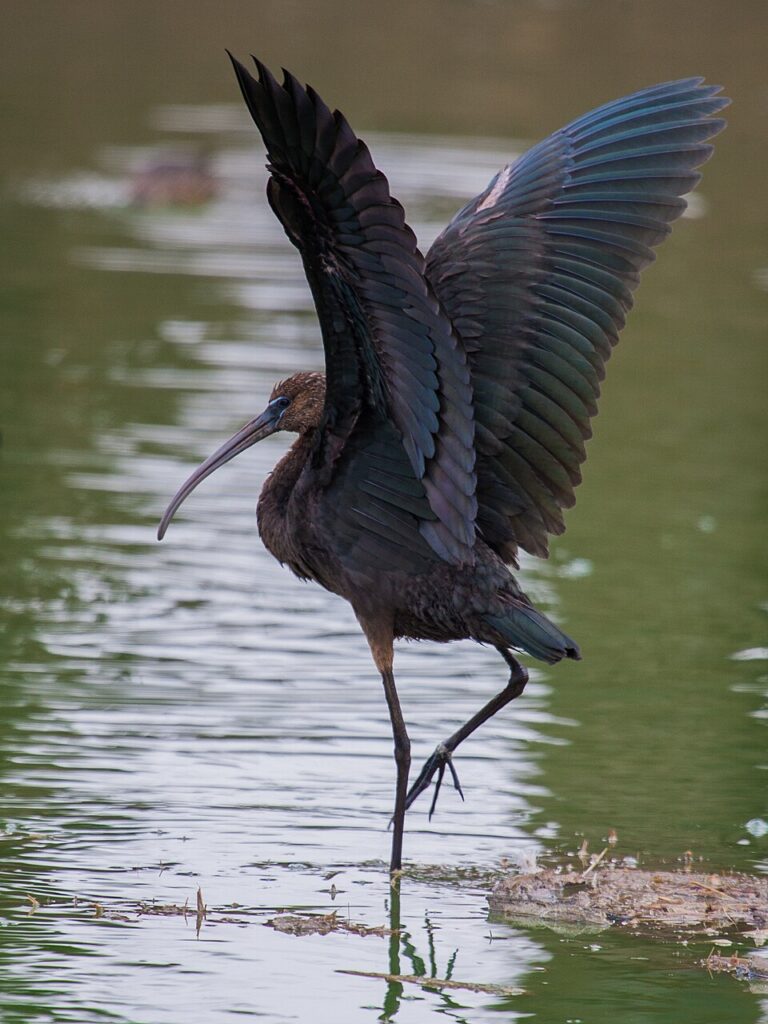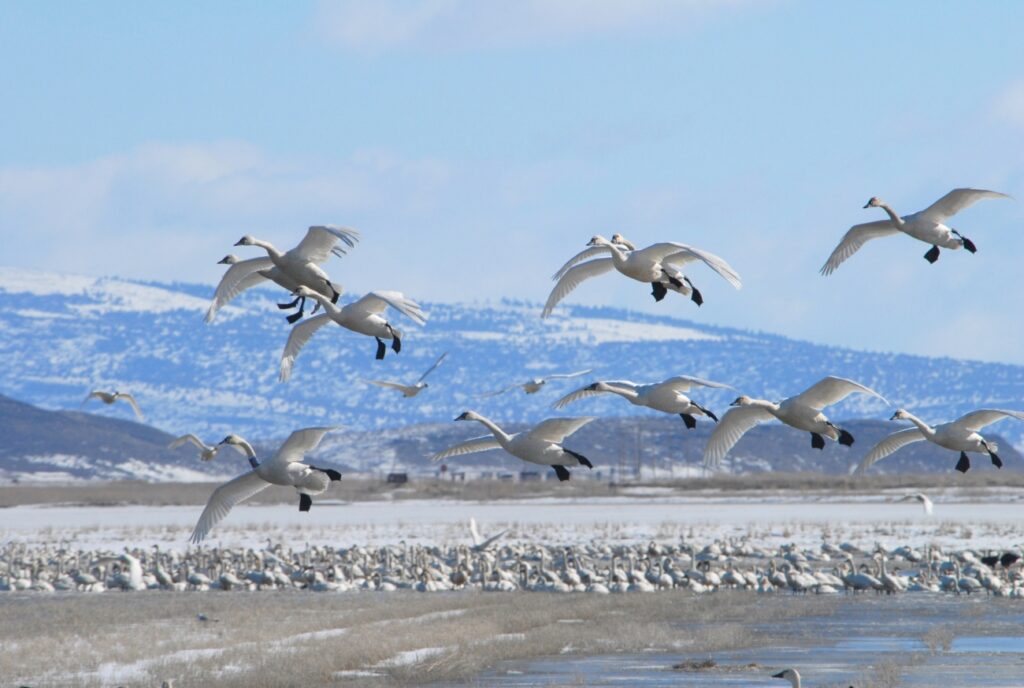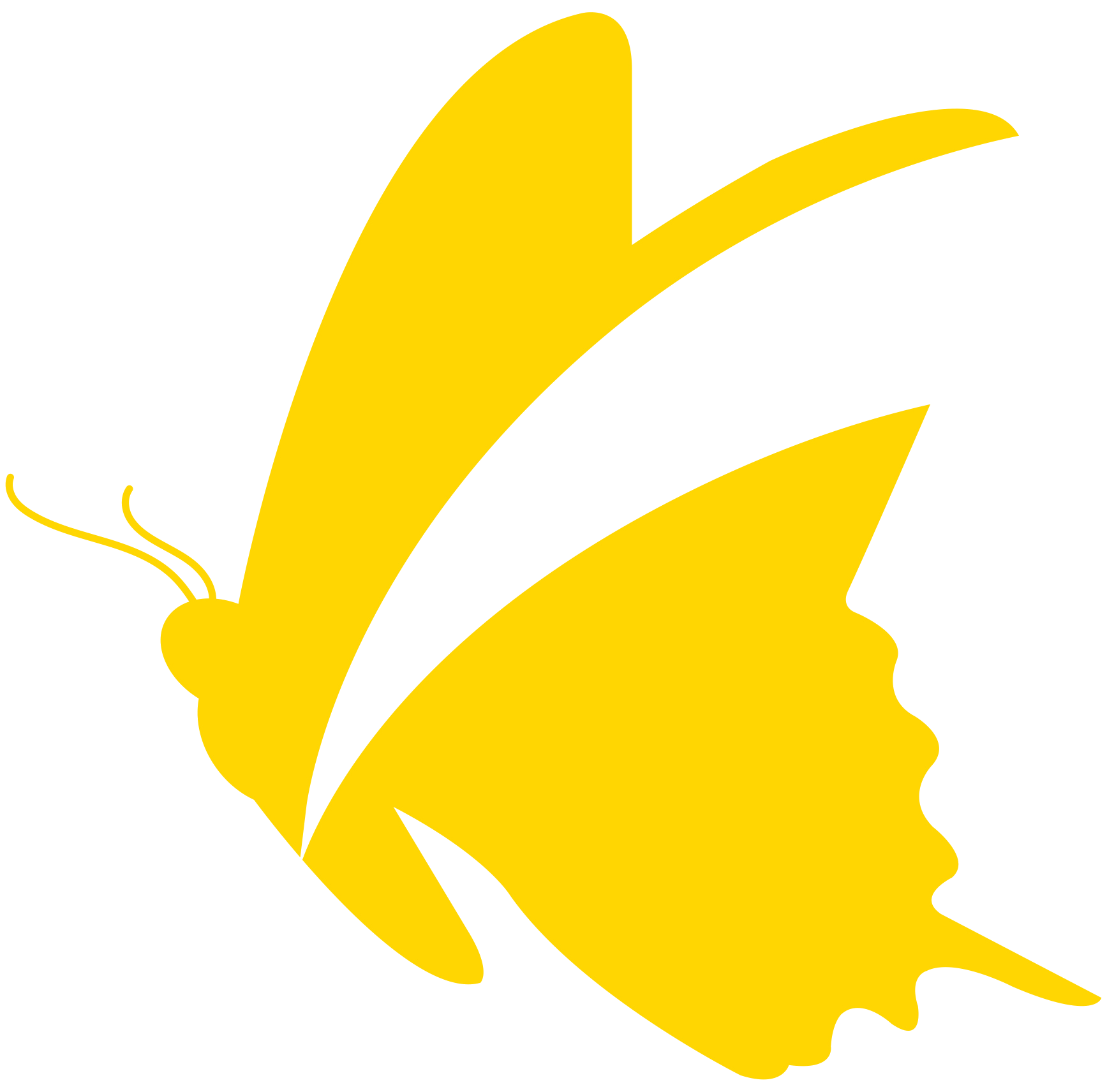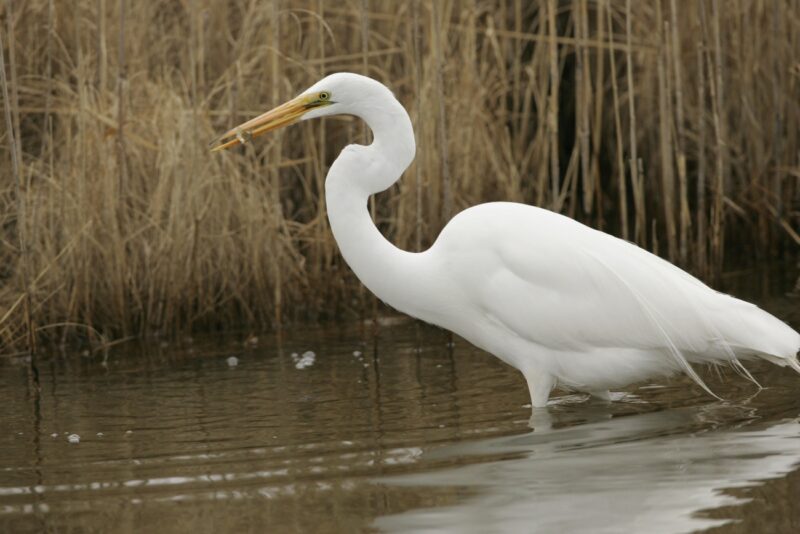“Where? I don’t see it.”
“In the reeds there. Behind the egret.”
“Which egret? All I see are white ibis”
“To the far right. It’s very dark, blends in.”
“It’s a white-faced ibis! No, maybe it’s a glossy ibis?”
“At this time of year?”

In the shallow freshwater pools on Chincoteague National Wildlife Refuge on Saturday, November 22, a huddle of white ibis were probing the muddy waters with their long, curved, pink bills, searching for earthworms, grubs and mollusks. A handful of great white egrets stood tall among them, watchful and waiting, while the busy ibis scurried up the waters in the misty morning light.
But what had caught the eyes of 18 bird watchers on a guided walk led by the Eastern Shore Master Naturalists was a dark shape, hard to discern at first, more shy than the 20 or so white ibis, and it faded into the browned marsh.
A second dark shape strutted out of the tall grasses, and yes, it had the distinctive curved beak, dull greenish legs and lightly speckled head of a glossy ibis out of breeding season. It was an uncommon sighting on the refuge this late in the year. The glossy ibis usually winters further south along the coastal regions. Birders always thrill at a rare sighting.

The bird walk kicked off Waterfowl Week at the refuge and marked the first full year that Eastern Shore Master Naturalists have offered guided walks on Chincoteague National Wildlife Refuge, in partnership with the U.S. Fish and Wildlife Serviceand the National Park Service. Nearly 100 people have attendedthe walks, with the summer offerings particularly popular. Their goal is to expand appreciation of the natural world and foster interest in conservation. The walks allow newcomers to birding to learn from more experienced birders, with binoculars, spotting scopes and bird books provided. On this walk, visitors came from as far away as Washington State, as well as neighboring Pennsylvania and from nearby Ocean City, Maryland.
One of the highlights of the walk was majestic tundra swans, which fly south from Canada for the winter. Perhaps they stay here for the clams. The tundra swans in the Chesapeake region are known for burrowing their black bills into the muddy bottom and using their feet to root up clams, a change from their regular diet of tubers, sedges and pondweed. Clamming likely accounts for the orangish hue they often have to their long straight necks. The birders counted 20 tundra swans on their walk.

Snow geese also are beginning to arrive, though none were spotted this Saturday. Still, the ponds were alive with waterfowl – American black duck, mallard, northern pintail, green-wingedteal, northern shovelers, American wigeon – many refueling after a long migration south. A sika deer galloped across the ponds and flushed out wave after wave of ducks, and a northern harrier hovered low over the straw-colored grasses, weaving back and forth as it hunted. Along with woodland birds, the team recorded a total of 40 species on a short, two-hour walk.
A special sight was an American kestrel perched on the top-most branch of a dead tree near the viewing platform on the Marsh Trail. “North America’s littlest falcon, it packs a predator’s fierce intensity into its small body,” is how Cornell Lab describes the kestrel on its All About Birds website. This male looked bedraggled, fluffing up its breast and wings to dry after a heavy early morning rain. But through the scope, its slate blue and coppery brown coloring looked most handsome.

If you would like to join the next bird walk, keep an eye on the Chincoteague National Wildlife Refuge Facebook page or the Eastern Shore Master Naturalists website for dates.
Top photo: Great egret at CNWR. USFWS photo.

